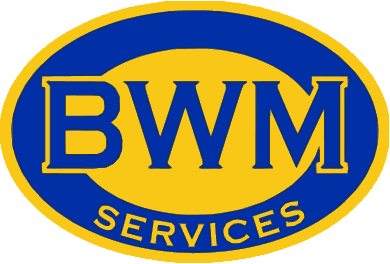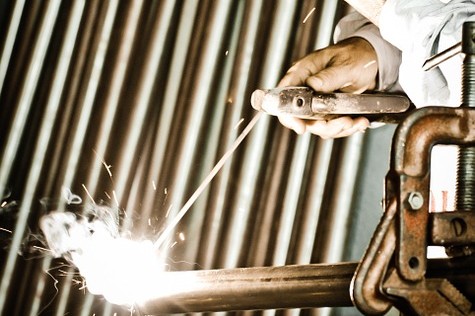In the 1930s during the period leading up to WWII, welding came into its own. Born out of a need to fuel the war effort, firms that supplied equipment rich in welding features needed to find more efficient ways of manufacturing. It was during this era that welding processes and welding engineering saw compelling levels of evolution. As specifications drove engineers to design better products, more strength and durability were required in welded joints. Innovation in welding followed suit by necessity. Applying engineering principles and experimental techniques has given technologists the opportunity to learn a great deal more about materials, interactions and processes.
Welding evolved quickly from a trade to a science. While welding is much more sophisticated than it had been in the past, it still requires both preparation and repair. To address this process step, the need to gouge away material was identified. Previous methods consisted of mechanical means of material removal (i.e., grinding and chipping). In the 1940s, Myron Stepath developed carbon arc gouging using the welding machine itself and a carbon electrode to metal metal. Eventually, this became the default method for gouging.
In the last decade, plasma gouging has come into its own in terms of being a viable solution. Even so, industry-wide option of plasma over other technologies has not taken grasp on a large scale. This can be largely attributed to a lack of understanding of both how the technology works and how it can be adapted to applications-based solutions. This article aims to bridge that knowledge gap.
Defining an Ideal Gouge
An ideal gouge is relative to the application. What may be ideal for one situation may not be suitable for another. Generally, the quality of a gouge can be evaluated by determining if an operator has removed the correct amount of material in a controlled manner. Shape may or may not play a critical role in the process. More specifically, removal of the material can be characterized in two ways: Positive feature removal or negative feature removal. Those that exist in space and are not surrounded by other material are positive features. While negative features exist in space, they are surrounded by other material. Here are some common applications that illustrate the difference.
Typical positive feature removal applications include:
- Casting sprue removal
- Seized bolt or not removal
- Removal of other protruding surface features, such as a fillet weld.
Typical negative feature removal applications include:
- Backgouging
- Excavation of weld defect
- Spot weld removal
Positive feature removal is fairly straightforward. In the majority of cases, the results are directly related to the highest speed at which one can remove the feature which one can remove the feature while protecting the workpiece from collateral damage. There is no requirement of a profile shape in positive feature removal.
On the other hand, negative feature removal can be a little more complex depending on the application. In many cases, the gouge profile is more crucial than the rate at which one can remove material. The profile (cross-sectional shape of the gouge) must reveal enough access for the subsequent weld. Of course, this can be highly situational depending on the orientation of the workplace. As a result, it can be difficult to define an ideal gouge without a context. However, a few assumptions can generally be made regarding characterization of a gouge profile:
- The width of a gouge should always be greater than its depth.
- The profile should be as close to symmetric as possible.
- The width-to-depth ration can be expressed as a unitless ration.
Furthermore, there are other features of the gouging process that are of importance:
- Slag buildup should not affect the base material and should be easily removed.
- The surface texture of the gouge should be relatively smooth such that it does not present adverse conditions to the subsequent welding process.
- If the gouging process results in surface hardening, then removal of the hard surface material will be required.
In addition, note that cutting materials can be utilized to gouge and gouging tools can be utilized to cut. For this reason, a distinction should be made between a cut and and a gouge.
A gouging process removes any amount of material from a body or bodies regardless of shape or rate such that piercing or severing of that body does not occur. Conversely, a cutting process is defined by piercing and/or severing a body or bodies.
Lastly, the anatomy of a negative feature gouge would be a typical gouge utilized for weld preparation or removal. The suitability of the geometric condition of a gouge is highly situational and, depending on the application, can vary. Nominal dimensions and other specifications can be found in various welding specifications, such as those published by the American Welding Society (AWS), ASME and ISO.
Mechanics of Plasma Gouging
Essentially, plasma is a super-heated, electrically conductive, ionized gas. Plasma was first developed in the late 1960s as a cutting technology, and has long since gained mainstream acceptance as a viable cutting alternative to oxyfuel, laser, electro-discharge machining or waterjet. It can be used effectively for various common gouging applications that have traditionally been reserved for technologies such as carbon arc gouging (CAG) or mechanical grinding.
At a system level, plasma shares several key features with CAG. Elements such as high-current arc melting and high air flow are common between both CAG and plasma. However, plasma consumables do not directly interact with the workpiece, unlike with CAG or grinding. Therefore, there is no contamination of the base material by the consumable materials. Speeds are comparable depending on the application.
The mechanics can be viewed simply to illustrate the primary difference between cutting and gouging with plasma. Similar to other fluid systems, the plasma can be constricted in its cross-sectional area to increase its velocity and resultant energy density. Velocities in the nozzle bore typically reach supersonic speeds, though this parameter can vary significantly depending on the bore design.
In theory, as the plasma stream becomes more constricted and velocity increases, the higher its cutting capabilities are in terms of material thickness, speed and kerf minimization. The inverse is true with gouging. Less air velocity will result from less constriction, but a higher volumetric flow rate will occur. This will limit the cutting action.
A diffuse plasma stream coupled with a high shield gas flow rate in gouging provides the appropriate combination of elements to produce partial melting and effective subsequent clearing of slag. This can be accomplished with the plasma gouging nozzle bore diameter being greater than two times the diameter of a cutting nozzle bore, while much shorter in length. In addition, there will be a sizable counterbore in the nozzle to encourage relaxation of the flow. Lastly, a shielding gas at high flow rates is necessary to evacuate the molten material to reveal the gouge.
Process Variables
The majority of process variables influence the features and characteristics of the gouge. Naturally, these relationships play a significant role in understanding how to match plasma gouge features to applications. Keep in mind that many of these relationships are inversely proportional.
System amperage is a key influencing factor on gouge shape. As the amperage increases, the gouge depth will increase as well in a proportional fashion. In one example where the amperage was between 35 and 50 A, a fixed gouge width of ½-in. was created at a static speed, while the amperage increased by steps to influence the depth of the gouge.
Another key process parameter that affects gouge shape is the angle of the torch relative to the workpiece. A primary angle is used to gain a basic gouge shape, but a second angle can be introduced to increase the gouge width. This is known as offset angle gouging. In this scenario, the torch is rotated about the “z” axis such that it is positioned at an offset angle α increases, the gouge widens.
However, as α approaches 90 deg, the gouge profile usually becomes an asymmetric shape. As a result, there will be a pronounced tangent surface feature on the near side of the gouge. This feature will show a flat face as well as a groove angle relative to the top surface of the workpiece and angle of the torch.
To summarize, a wider gouge an be accomplished by utilizing the offset angle gouging technique. Optimum profile shapes can be gained by experimentation, the maximum allowable tangent surface being determined to suit the application.
In addition, the effect of the torch-to-workpiece distance (TWPD) can be cited as a key influencing factor on the gouge shape. In essence, the closer the torch consumables are to the workpiece, the deeper and narrower the gouge will be. This is because the energy density will be higher as it reaches the workpiece with a smaller TWPD. On the other hand, the further the plasma travels without the aid of an impinging device (i.e., a nozzle), the more diffuse it will become. To reiterate, the relationship of arc constriction to distance traveled to the workpiece is the enabler of plasma gouging. This working distance is commonly referred to as arc stretch. Varying the arc stretch has a direct effect on the gouge profile shape and the ability to remove material.
However, all plasma systems place a limit on arc stretch as a function of arc voltage. This is mainly attributable to the duty cycle associated with the power supply and its ability to manage heat and energy loads on the system components. As a result, when the arc reaches its maximum, the power supply will automatically break the circuit and the arc will disconnect from the workpiece. At this maximum distance, the operator should be able to achieve a theoretical maximum width gouge at minimum depth for a given amperage and primary torch angel.
It should be noted that similar affects can occur (though to a lesser extent) by varying system amperage and linear travel speed. Width X, depth Y and groove angle θ, as well as the scaling factors, will significantly vary by making of system and its associated system parameters.
Lastly, some discussion of the beginning transition region of the gouge is required. This region can be referred to as the lead-in region. When gouging with plasma, the process requires some linear distance to reach is full depth. Arc attachment occurs at the surface of the workpiece and is somewhat diffuse, so a delay in complete penetration is to be expected. Variations in system make and process parameters will vary this effect.
Furthermore, the angle tangent to the curve of the lead-in region is generally about one-third the primary torch angle, depending on the process parameters. This effect is most evident in mechanized applications when a starting shim is used.
Conclusion
The operator in today’s welding and fabrication markets has many choices when it comes to selecting a gouging solution. For many operators, established technologies such as carbon arc gouging and grinding are still today’s preferred solutions. However, user feedback suggests gouging with plasma offers a safe, efficient and cost-effective way to make a gouge.
Standard and best practices for plasma gouging are only recently developing. To address this need, this article has presented the basic relationships between these key process parameters:
- Amperage
- Torch positioning
- Torch motion
With a basic understanding of how these process parameters interact, a user now has the building blocks needed to design a plasma gouging process to address specific applications.
Source: aws.org


